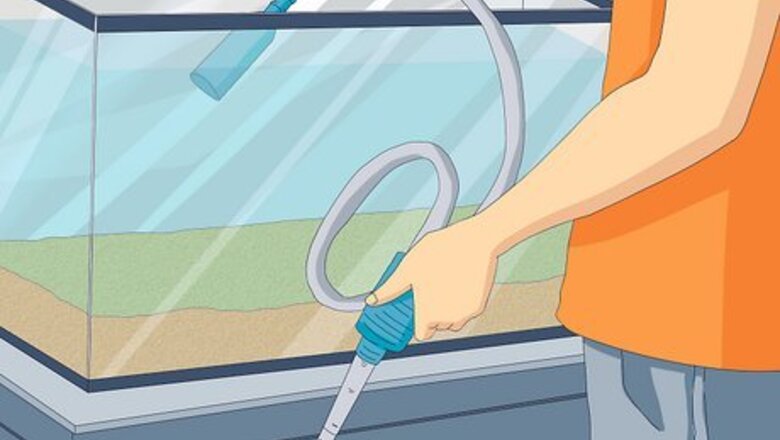
views
Ensuring Your Fish’s Safety Prior to Traveling

Change the water for a few days before moving. Some of the water in your aquarium should be changed prior to moving and transporting the aquarium. This helps ensure that the water in the tank is clean. Switch out 20 percent of the water in the aquarium daily for five days prior to transporting the aquarium.
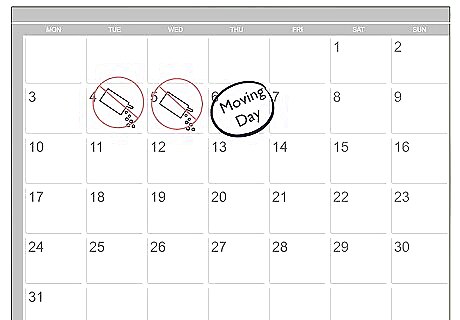
Avoid feeding your fish for one to two days before moving. When you are travelling, you don’t want your fish to mess up the water more than they have to. Fish can go around a week without food, so they will be fine during your move. Don’t give them food for 24 to 48 hours prior to transporting them.
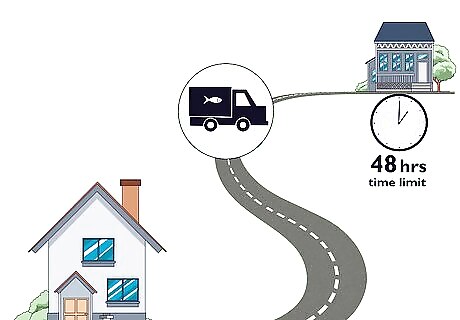
Plan for transporting your fish. Unlike some pets, you can’t just put a fish tank or fish bowl in the car and go. Instead, you need to figure out how you will transport them. Most fish can survive for around 48 hours of travel, but beyond that you increase the risk that they will not survive. When you stop for the night, you need to take the fish with you. Don’t leave them unattended in cars or trailers. If you need to fly with your fish, contact the airline to find out what requirements they have for transporting fish.

Wait until the last possible moment to pack the fish. You shouldn’t pack the fish until you are ready to go. They shouldn’t be packed and waiting to be transported. You want to take as little time as possible to transport your fish. You should also plan to unpack your fish as soon as you reach your destination. They should be the first thing you unpack.
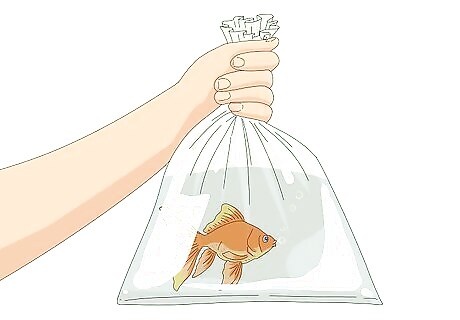
Avoid unnecessary travel with your fish. Fish are not pets that are easily transported. You shouldn’t take them on vacation with you or carry them around in a vehicle for fun. Fish are very fragile, which means you should only transport them when it is absolutely necessary, like when you are moving.
Choosing a Container for Transportation

Place your fish in plastic bags. One way to transport your fish is to put them in plastic bags. You can get plastic fish bags from a pet store. Fill the bag a third of the way full with water from the aquarium. Then, place one fish into each plastic bag. Don’t put multiple fish in the same bag. Place a second bag over the first bag so that it is extra protected. This helps in case the bag leaks. Use a rubber band to secure the bags so the fish and water cannot get out. If you are going to have the fish in bags for longer than an hour, get some pure oxygen from your local pet store to place in the bags with them.
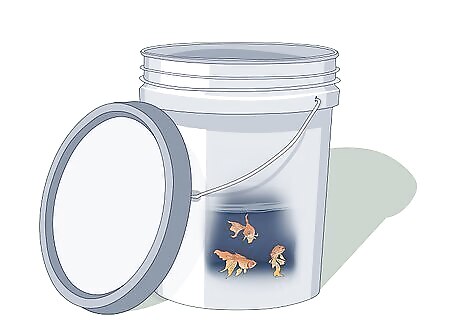
Transport the fish in five-gallon buckets. A five-gallon bucket can be an easy way to transport multiple fish in the same container. Make sure you buy a new bucket and don’t use one that has had chemicals inside them. The bucket may have residual chemicals, which may kill or harm your fish. Make sure to cover the bucket with a water tight lid. Fill the bucket with water from your tank. Prevent using harmful fish transportation methods. "When relocating my fish cross-country, I almost used a transportation method the article rightly warned against. Following the proper container and water-changing advice ensured my fish stayed healthy on the long journey." - Kim L. Transport a large fish collection in a bucket. "With over a dozen fish to transport, I feared they wouldn't all make the trip alive crammed in bags. Using the handy 5-gallon covered bucket with clean tank water allowed the transport of my large brood while regulating temp." - Isabella A. Keep aquarium fish alive for a third move. "After tragic losses moving fish previously, I scrutinized every preparation step in this guide for my next long-distance relocation. Carefully changing water, selecting containers, and maintaining proper temperatures ensured my entire aquarium thrived this third time around." - Randall K. Gave confidence for cross-country fish move. "I nearly rehomed my fish before an upcoming California to Washington move, worried they wouldn't survive the journey. The clearly explained transportation steps here reassured me I could keep my finned friends healthy on the long drive." - Cameron S. Did you know that wikiHow has collected over 365,000 reader stories since it started in 2005? We’d love to hear from you! Share your story here.
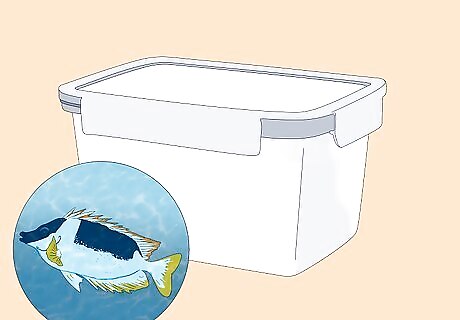
Put the fish in a container. Another way you can transport your fish is in a sturdy container that has a lid. Fill the container with water from the tank. Make sure the lid is secure so your fish doesn’t fall out and water doesn’t leak out. This may be good for fish with sharp fins or who may get out of a plastic bag.
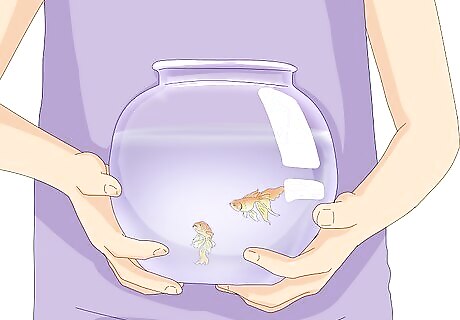
Transport the aquarium if it is small. Small tanks can be moved with the fish and water in it. Large tanks should never be moved as a unit. If you move the aquarium with water and fish, make sure to remove all other objects. Take out all rocks, decorations, and filters. These may come loose and hurt your fish. You should also remove some of the water. This helps reduce the risk of spillage, along with giving your fish less room to be bounced around. However, even small tanks can be difficult to move. They are very heavy, but also fragile. If you drop the tank and it breaks, you may lose all of your fish. Tanks that are moved with water in them are more likely to get chipped or cracked.

Transport your fish in an insulated, secure container. If you have placed your fish in a bag or small containers, you should pack them in a secure carrier. Place bubble wrap between the fish bag and the container or other fish bags. Make sure they are sturdy so they don’t roll around. This can cause damage to your fish. If you have an insulated container, consider transporting your fish in it. A picnic cooler or styrofoam cooler will be great for this.
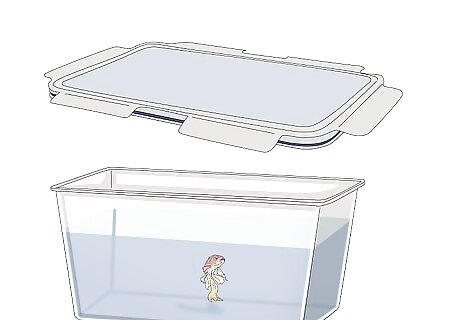
Choose a container large enough for your fish. No matter which container you choose for your fish, you should choose one large enough for them to swim around in. They don’t need a ton of room, but they should be comfortable. You should also make sure the container is large enough that the water has enough oxygen for the fish. You should only fill the container around a third of the way full. The rest of the container should be open for oxygen.

Place all plants in plastic bags. If you have live plants in your aquarium, you should put them in plastic bags filled with water from the tank. This will keep the conditions close to what they are in the tank, and help keep good, essential bacteria alive on the plants.
Keeping Your Fish Safe While Traveling
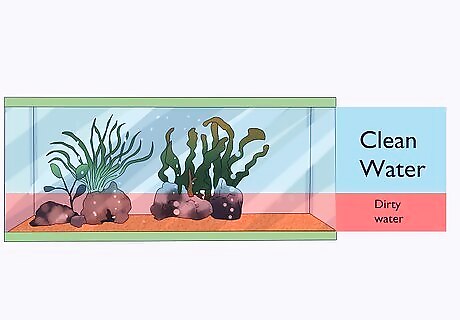
Fill the containers with water from the top of the tank. You need to place your fish in water from the tank, not from the tap. Fill your transport container with water from the top of the tank. This water is the cleanest. If you take water from the bottom, you will be placing waste into the small container and potential exposing them to bacteria that has settled at the bottom.
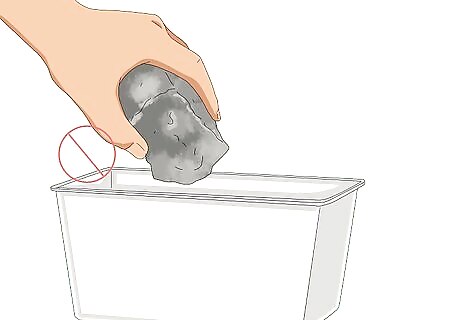
Avoid placing items in the container with your fish. You shouldn’t add your fish’s favorite rock or plant into the bucket or container with them. The fish should be the only thing in the bucket, except the water from your tank. Any extra items may move around and harm your fish.
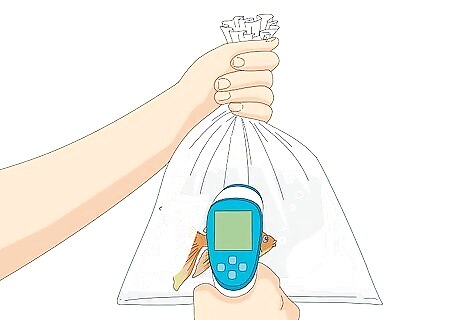
Regulate the temperature. Fish need to stay at their normal water temperature. Any fluctuations in water temperature can cause your fish to get sick. Try to keep your fish’s water the same temperature of their normal aquarium. This means you should transport them in the part of your vehicle where you can use the air conditioner or heater. You can also use insulation to the transportation container. This can help regulate the temperature. Check the fish’s temperature to make sure it doesn’t get too hot or too cold.

Place your fish in a dark place. Transporting the fish in a darker state can help keep them from getting too stressed. Fish are active and awake during the day when it is bright outside. At night, they are less active. Place something over the fish if they are in a container where they can get light during the day. For example, you may place a sheet or rug over the container.
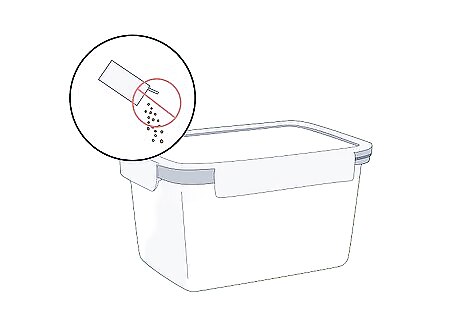
Avoid feeding your fish during travel. Travel is very stressful for your fish, so you don’t want to do anything to cause more stress. Don’t worry about opening bags or containers to feed your fish. This also helps reduce the need for elimination, which can make the water it is traveling in dirty.

Reintroduce the fish to the tank when you arrive. If you transported fish in bucket, you can pour them and the water directly into the tank. You may also want to use a net to move them from the bucket to the tank. If you transported your fish in bags, place the bags on top of the water and let them float. This helps regulate the temperature of the water in the bags. When the temperature of the water in both are similar, you can pour the fish into the tank.
Taking Care of the Tank
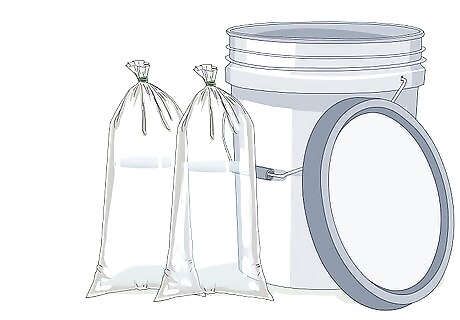
Empty the tank water into a fish-safe container. After you have secured the fish and the plants, place 80 percent of the tank water into a fish-safe bucket or bags. This water should be gotten from the top of the tank, not near the bottom. This limits the amount of waste you take with you.

Place decorations in tank water. If you have rocks and other decorations in your tank, place them in a bag filled with water from the tank. This will preserve the beneficial bacteria that has grown on the ornaments. Don't transport these things in the tank. The tank could crack if it is moved with items inside it.

Pack your filter media properly. The way you transport your filter media depends on how far you will be going. For short moves where the tank will not be separated for long, place the filter media in a clean, chemical-free, sealed container. Don’t clean it. For long moves, you can clean the filter and reintroduce it when you arrive at the destination. You may also want to throw it away and buy a new one.

Put your aquarium back together. When you arrive at your destination, you should put your tank back together like it was before. Place decorations and rocks into the tank, and then fill it with the water you kept from the tank. Replace all the filters, heaters, and pumps. Then, place the live plants back in the aquarium.




















Comments
0 comment